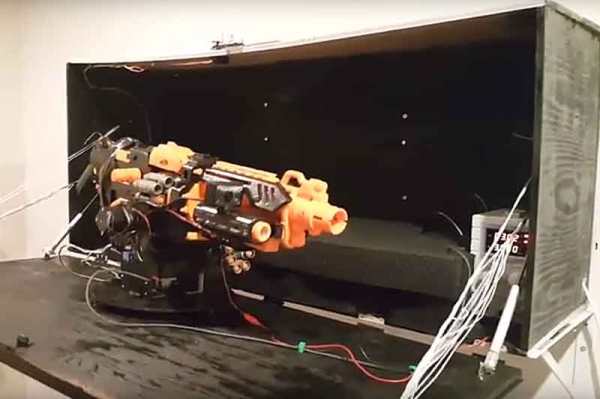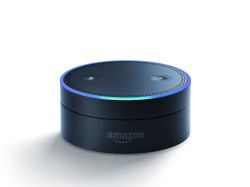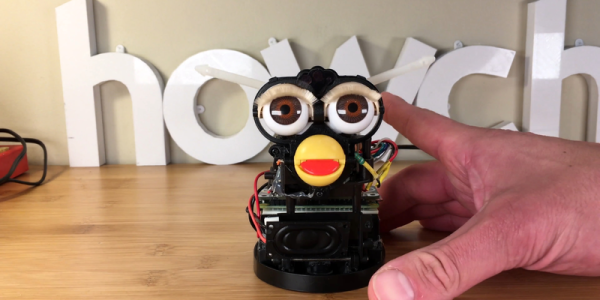If our doom at the hands of our robot overlords is coming, I for one welcome the chance to get a preview of how they might go about it. That’s the idea behind Project Icarus, an Alexa-enabled face-tracking Nerf turret. Designed by [Nick Engmann], this impressive (or terrifying) project is built around a Nerf Vulcan, a foam dart firing machine gun mounted on a panning turret that is hidden behind a drop-down cabinet door. This is connected to a Pi Zero equipped with a Pi camera. The Zero is running OpenCV and Google Firebase, which connects it with Amazon’s Alexa service.
It works like this: you say “Alexa, open Project Icarus”. Through the Alexa skill that [Nick] created, this connects to the Pi and starts the system. If you then say “Alexa, activate alpha”, it triggers a relay to open the cabinet and the Nerf gun starts panning around, while the camera mounted on the top of it searches for faces. The command “Alexa, activate beta” triggers the Nerf to open fire.





















